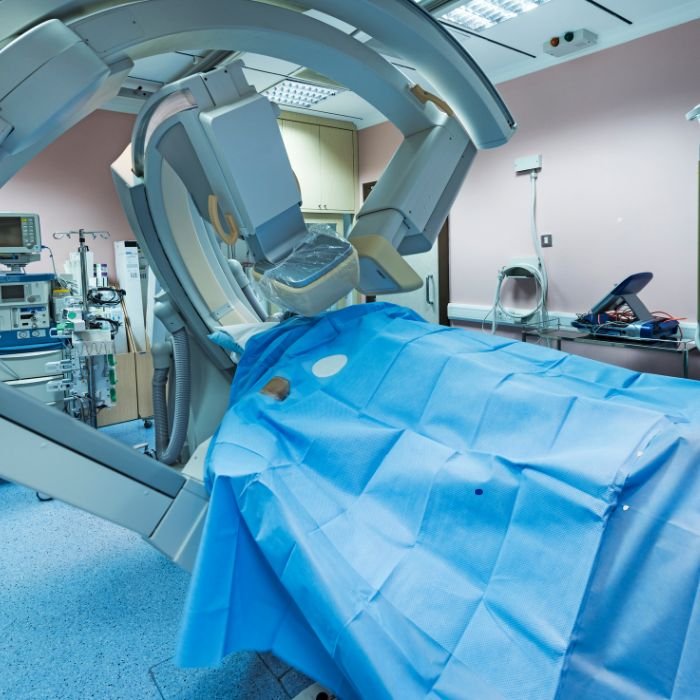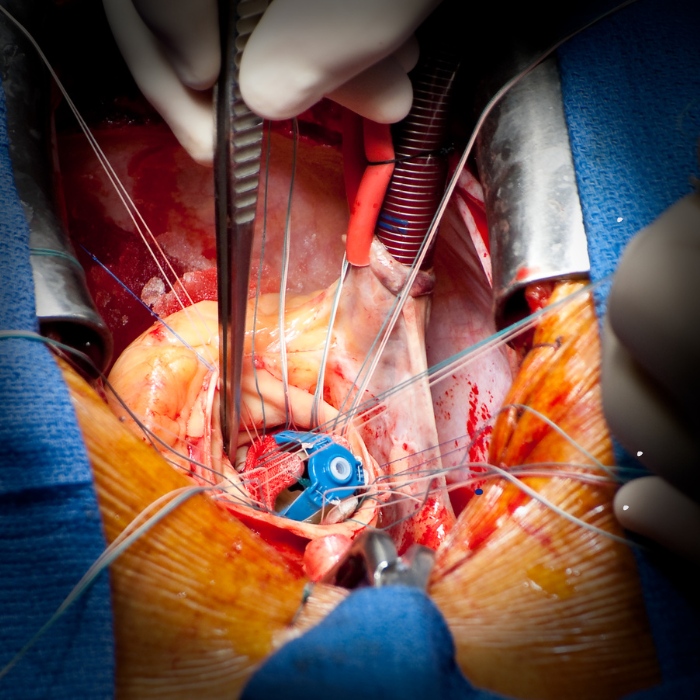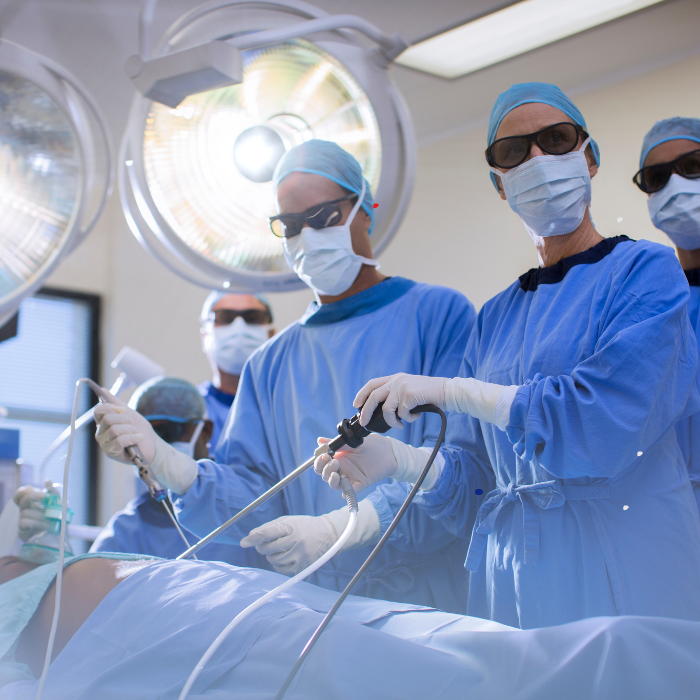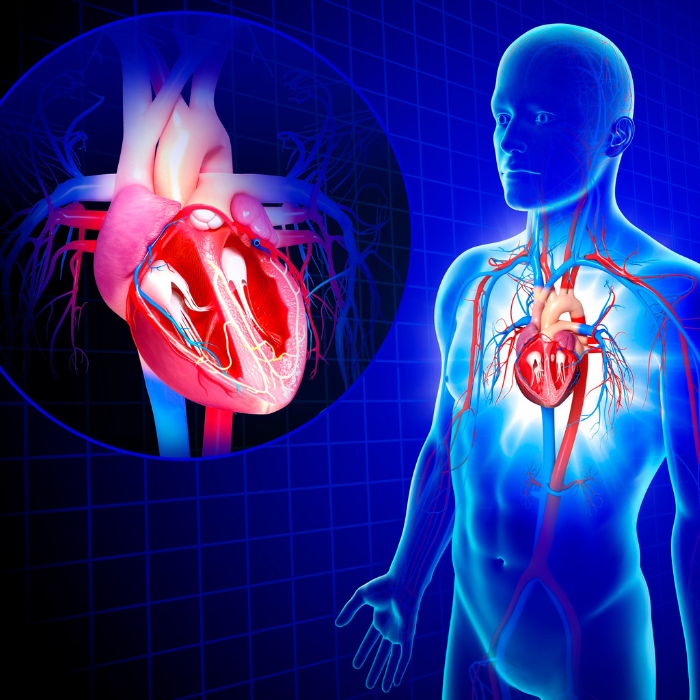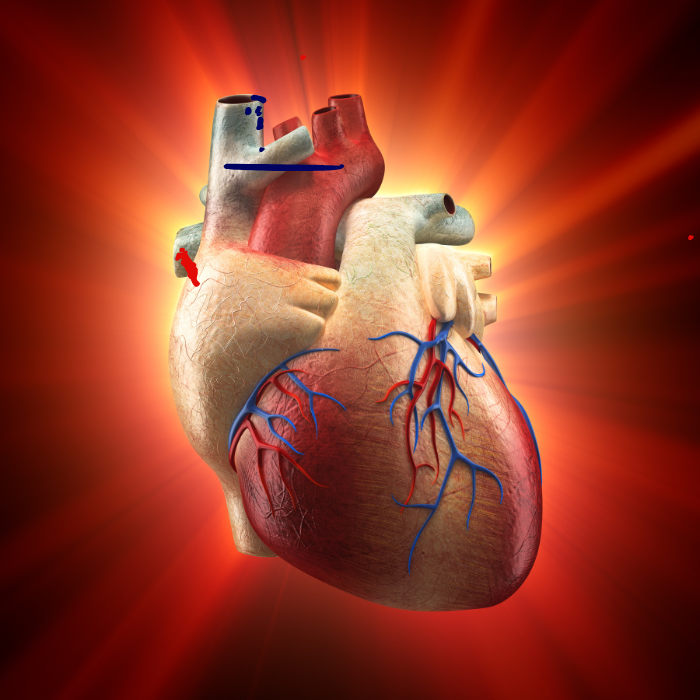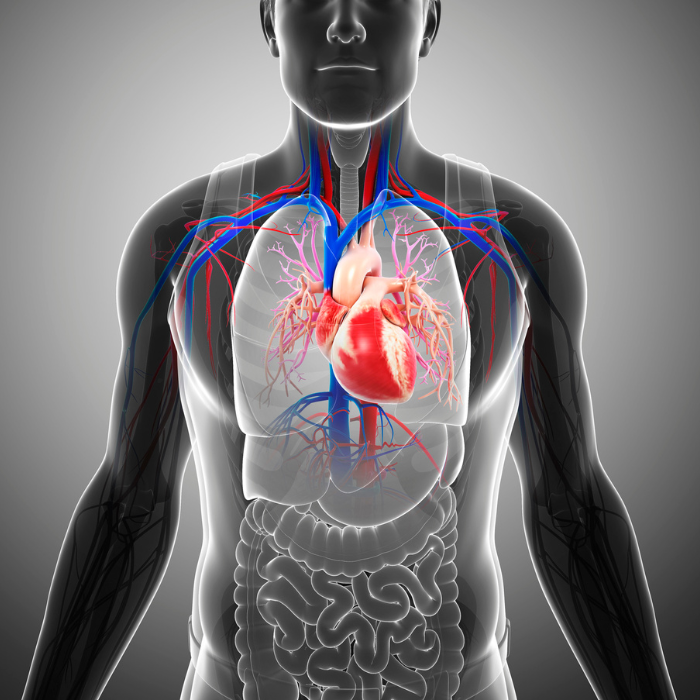

Types Of Cardiology Treatment
Coronary Angiography
Coronary angiography is a medical technique that helps to visualize the coronary arteries, around the heart to detect narrowings or blockages. During the procedure, a tube called the catheter will be placed through a blood vessel in your arm or upper leg and passed to your heart and an X-ray is taken to see if the arteries are blocked, then further a dye is injected through a tube into the coronary arteries.
Read MoreHeart Valve Replacement
The procedure of heart valve replacement can be explained in a way, that barters away the flawed heart valve with a fresh one. Now the term heart valve is an umbrella term that represents any valve out of the four valves that are present in the heart, which primarily conducts the duty of maintaining the flow of blood between the chambers of the heart and the
Read MoreBypass Surgery
Bypass Surgery, also called Coronary Artery Bypass Grafting (CABG). It is a surgical procedure to treat coronary artery disease (CAD) by improving blood flow to the heart muscle. It helps restore blood flow to the heart by bypassing blocked or narrowed coronary arteries.
Read MoreAtrial Septal Defects
Often known as a hole located in the heart, the atrial septal defect might be known as a hole in the wall that isolates the two chambers of the heart at the upper area.
Read MoreCoronary Artery Bypass Graft
Coronary artery bypass graft, Coronary Artery Bypass Grafts, sometimes known as heart bypass surgery is a surgical procedure that helps the heart restore blood by bypassing blocked or narrowed coronary arteries.
Read MoreVentricular Septal Defect
Ventricular Septal Defect is a congenital type of heart disease in which a hole in the heart is present that separates the heart’s lower chamber, known as the ventricles. Because of this, there may be significant effects on blood flow and oxygenation.
Read MoreCardiology is the branch of medicine that studies, diagnoses, and treats heart and blood vessel disorders. Cardiology Treatment is a medical, not surgical, discipline. Cardiologists provide the continuing care of patients with cardiovascular disease, performing basic studies of heart function and supervising all aspects of therapy, including administering drugs to modify heart functions.
The Story of Heart and Cardiology
The heart is one of the remarkable organs that beats around 3 billion times in a person’s lifetime and pumps over 1 million barrels of blood. It is a complex and tangled organ that requires specialised cardiac care. Cardiologists have dedicated their careers to understanding the heart and its functions to develop innovative treatments for heart conditions. They will carry out tests, and they may perform some procedures, such as heart catheterizations, angioplasty, or insertion of a pacemaker. As one of the most critical fields in medicine, Cardiology focuses on ensuring the proper functioning of the heart, which is essential for overall health and well-being.
Major Areas of Cardiology
Cardiology encloses various subspecialties that serve diverse aspects of heart care.
Invasive Cardiology
Invasive cardiology is the branch of cardiology that uses invasive procedures and instruments to diagnose and treat heart disease. Invasive cardiology treats heart conditions such as coronary artery disease, heart failure, peripheral artery disease, etc. by performing procedures like Angioplasty, Stenting, Heart biopsy, etc. Invasive cardiology may be effective in treating heart disease. Still, it may carry risks and is commonly reserved for patients who have not responded to other treatments or have serious heart disease.
Non-Invasive Cardiology
This type of cardiology specializes in diagnosing and treating heart-related issues without using surgical instruments. Non-invasive cardiology provides many services, such as nuclear cardiology, echocardiography, cardiac electrophysiology, stress tests, heart monitors, CT scans, etc. It includes many procedures like angioplasty, coronary thrombectomy, intravascular ultrasound, cardiac assist devices, etc.
Interventional Cardiology
The branch of cardiology uses minimally invasive procedures and catheters for diagnosing and treating various heart diseases. These procedures are performed through small incisions and involve using catheters and other instruments. Some interventional cardiology procedures may include percutaneous valve replacement, percutaneous valve repair, congenital heart defect correction, etc.
Clinical Cardiology
It is a branch of cardiology that specializes in diagnosing, treating, and managing heart diseases and conditions with non-invasive methods. Many cardiologists use different techniques for diagnosing heart conditions such as Electrocardiogram, stress testing, Holter monitoring, etc. While it mainly focuses on non-invasive methods, doctors may refer to invasive procedures like cardiac catheterization, pacemakers, etc.
Preventive Cardiology
Preventive cardiology focuses on reducing the risk of cardiovascular diseases with proactive measures. It aims to identify and manage risk factors early, promote healthy lifestyles, and prevent the development of heart disease. It is crucial to have regular screening and early detection of cardiovascular conditions with some assessments like blood pressure measurement, lipid profile, blood glucose tests, electrocardiogram, etc.
Cardiac Electrophysiology
Cardiac Electrophysiology focuses on electrical activities of the heart and involves diagnosing and treating heart rhythm disorders, known as arrhythmias. Many tools are used in cardiac electrophysiology, such as electrocardiograms, Holter monitors, event monitors, etc. Some medical advancements have been made in electrophysiology, like three-dimensional mapping, cryoablation, leadless pacemakers, etc.
Cardiovascular Imaging
Cardiovascular imaging is an essential cardiology component and involves using various techniques to visualize the heart and blood vessels. It helps diagnose and plan treatment for various cardiovascular conditions. Many common cardiovascular imaging modalities exist, such as echocardiography, cardiac magnetic resonance imaging, nuclear cardiology, etc. Advanced imaging technologies provide detailed information about the structure and functioning of the cardiovascular system.
Cardiothoracic Surgery
This surgery deals with the organs inside the chest, mainly focusing on the heart, lungs, oesophagus, and other thoracic organs. The surgeons in this field are trained to perform complex surgeries to treat various heart conditions. There are many advancements in minimally invasive techniques such as robotic-assisted surgery and video-assisted thoracoscopic surgery which may offer patients less invasive options with improved outcomes and faster recovery times.
Pediatric Cardiology
Pediatric Cardiology is a type of surgery mainly focusing on diagnosing, treating, and managing heart conditions, especially in infants, children, and adolescents. There are advancements in diagnostics tools in pediatric cardiology such as fetal cardiology, 3D printing, telemedicine, etc. Pediatric cardiologists use advanced diagnostic tools to ensure that children with heart conditions can lead healthy lives.
Adult Congenital Heart Disease
It refers to congenital heart defects (CHDs) that continue or are diagnosed in adulthood. Many individuals born with CHD now survive into adulthood with different medical advancements. There are several ways to diagnose ACHD with tools such as echocardiography, cardiac MRI, cardiac CT, etc. for the further treatment and management of different cardiac care conditions.
Know More About Cardiology Treatment: Angioplasty and Bypass Surgery and Many More
Angioplasty treatment and bypass surgery are medical procedures used in treating clogged or blocked arteries. Arteries are blood vessels that provide oxygen-rich blood throughout the body. By that time, Arteries may get lodged due to the plaque buildup on the inner walls, which can result in reduced blood flow or, in some cases, blocked. It can lead to strokes and heart attacks.
Angioplasty Treatment
It is also called percutaneous coronary intervention (PCI). Angioplasty treatment is a minimally invasive procedure to open narrowed or blocked blood vessels, especially the coronary arteries. This treatment helps improve blood flow, relieve chest pain, and reduce the risk of a heart attack. This treatment is commonly used to treat coronary heart disease and heart attacks. There are a few types of angioplasties which include:
Balloon Angioplasty (Percutaneous Transluminal Coronary Angioplasty – PTCA)
In this treatment, a small balloon is inflated at the tip of a catheter at the site of blockage. Then the plaque is pressed against the artery walls that widen the artery.
Stent Placement
It is often combined with balloon angioplasty. In this treatment, a stent (a small mesh tube) is placed inside the artery keeping it open. These stents can be metal, which release medication to prevent re-narrowing of the artery.
Rotation Atherectomy
Before balloon angioplasty and stenting, a rotating shaver to remove hard, calcified plaque from the artery walls.
Laser Angioplasty
In conjunction with balloon angioplasty, a laser at the tip of the catheter vaporizes the plaque.
Some of the indications for angioplasty can be coronary artery disease (CAD), Acute Myocardial infarction (heart attack), Angina Pectoris, Stable Angina, and Silent Ischemia. It is a crucial intervention for treating coronary artery disease which helps in symptom relief, improved blood flow, and less risk of heart attack.
Bypass Surgery
It is also referred to as coronary artery bypass grafting (CABG). It is a surgical procedure for treating coronary artery disease (CAD) by improving blood flow to the heart muscle. CAD usually happens when the coronary arteries become narrowed or blocked due to plaque buildup. The surgery creates a new path for blood to flow around blockages. There are several types of bypass surgery such as:
Traditional CABG
It involves an open-heart surgery where a graft is used to bypass the blocked coronary artery. Common types of grafts are:
- Internal mammary artery (IMA)
- Saphenous Vein
- Radial Artery
Off-Pump CABG
It is also known as “beating heart surgery”. It is performed without a heart-lung machine while the heart still beats. Off-pump CABG is used to reduce complications that are associated with cardiopulmonary bypass.
Minimally Invasive CABG
This surgery uses smaller incisions and specialized instruments without opening the chest fully to perform the surgery and the techniques include:
- Endoscopic CABG
- Robotic-Assisted CABG
Bypass Surgery is recommended for patients with Severe coronary artery disease, Failed angioplasty or stenting, unstable angina or heart attack, and multi-vessel disease. Advances in surgical treatments improve patient outcomes and recovery times.
Other cardiology treatments are:
- Coronary Angioplasty (PTCA)
- Coronary Angiography
- Balloon Valvuloplasty (Balloon Valve Surgery)
- Pacemaker Implant
- Open Heart Surgery
- Valve Replacement
- Pediatric Cardiac Surgery
- LVAD Surgery
Cardiac Rehabilitation
Cardiac Rehabilitation or cardiac rehab is a personalized program designed for patients with heart conditions to help improve their cardiovascular health, regain their strength, and return to their daily activities. It combines medical evaluation, exercise, lifestyle modification, and psychological support. The main goal of this rehabilitation is to enhance overall well-being and improve quality of life. Many advanced methods and treatments exist, such as Telehealth and Remote Monitoring, enhanced exercise equipment, and personalized medicines to improve the expected patient outcomes.
Cardiac rehabilitation is an important component of recovery and management for heart disease patients. It helps patients improve their cardiovascular health with supervised exercise, lifestyle changes, and education about their disease. There is an excellent improvement in technology and personalized medicine that increases the effectiveness and accessibility of cardiac rehab programs.
Cardiology Treatment in India
Cardiac treatment in India has seen significant progress, with the top heart hospitals with impeccable infrastructures and the best cardiac surgeons in recent years. Some top hospitals for the best cardiology treatment in India are:
- Fortis Hospital, Noida
- Medanta Medicity, Gurugram
- Max Super Speciality Hospital, Delhi
- Artemis Hospital, Gurugram
- BLK Max Super Speciality Hospital, New Delhi
These hospitals have a comprehensive team of experts and experienced cardiac surgeons worldwide who provide the best treatments and personalized patient-centric cardiac care services. A few cardiac surgeons for the best cardiology treatment in India are:
- Dr. T S Kler, Gurugram
- Dr. Ajay Kaul, Noida
- Dr. K.S. Iyer, New Delhi
- Dr. Ashok Seth, New Delhi
- Dr. (Col.) Manjinder Singh Sandhu
Conclusion
Cardiology is a vital branch of medicine that helps diagnose, treat, and prevent heart diseases. With technological advancements and rapid medical research, cardiology treatment has significantly progressed in understanding heart conditions and diseases. Cardiology offers a range of treatment options, such as interventional treatments like angioplasty and stenting and surgical procedures like bypass and heart transplants. Cardiology plays a vital role in improving the lives of patients worldwide. India offers the best cardiology treatment at affordable prices with excellent hospitals and experienced doctors. India’s cardiology treatment in India has gained recognition globally as it provides reliable and excellent cutting-edge technology and advanced medicines and treatments. Medheal Global Care offers various aspects of cardiology treatment in India like end-to-end patient coordination, doctor consultation, medical visas, travel, and documentation with personalized care.

